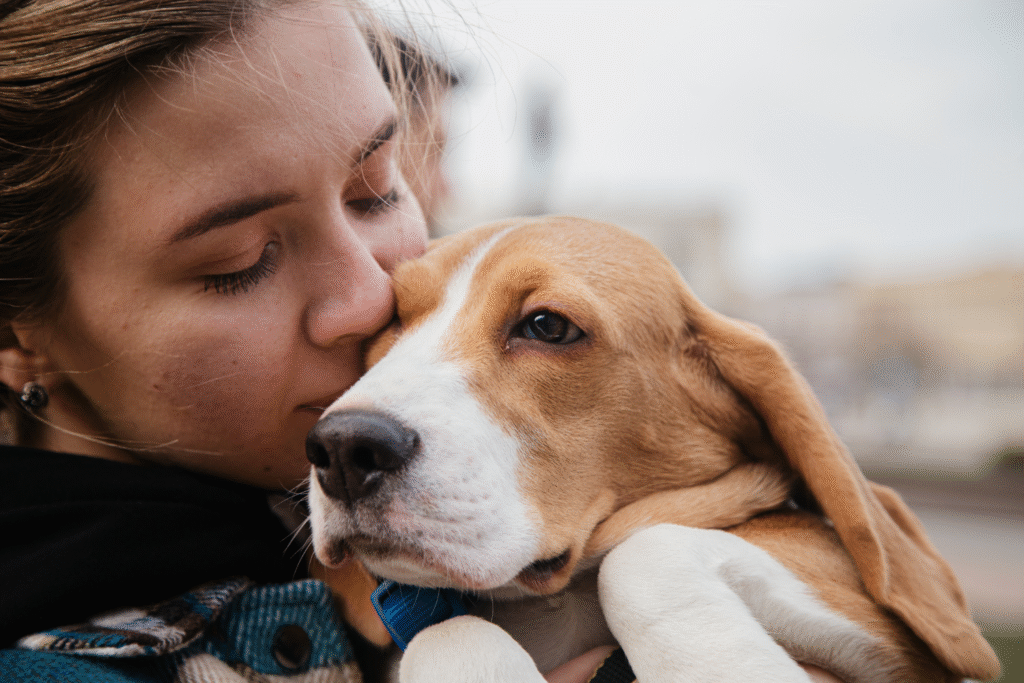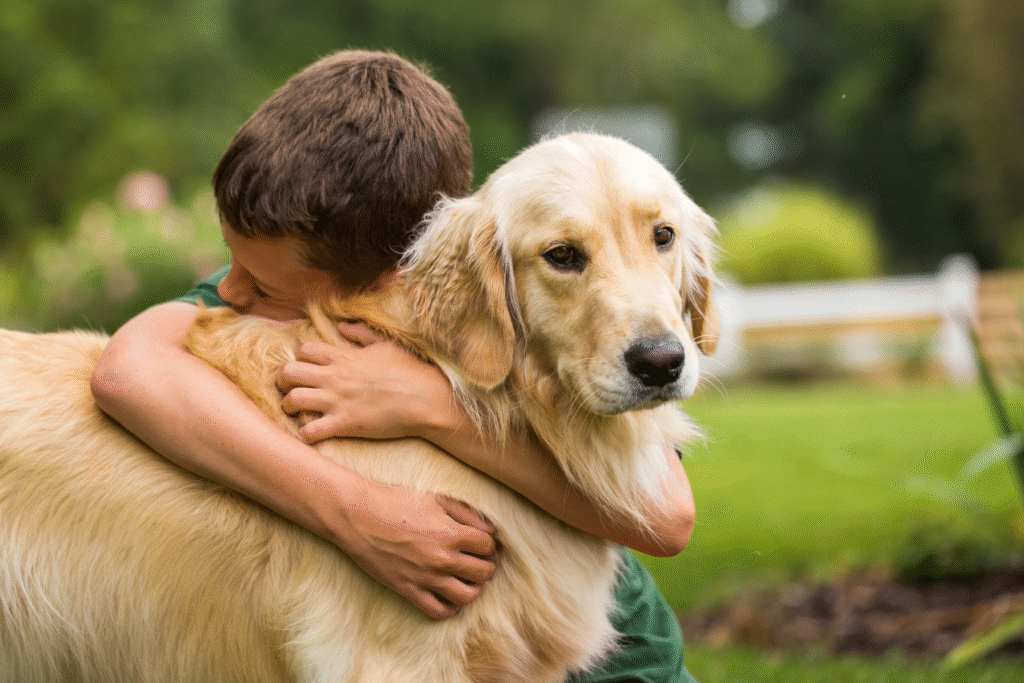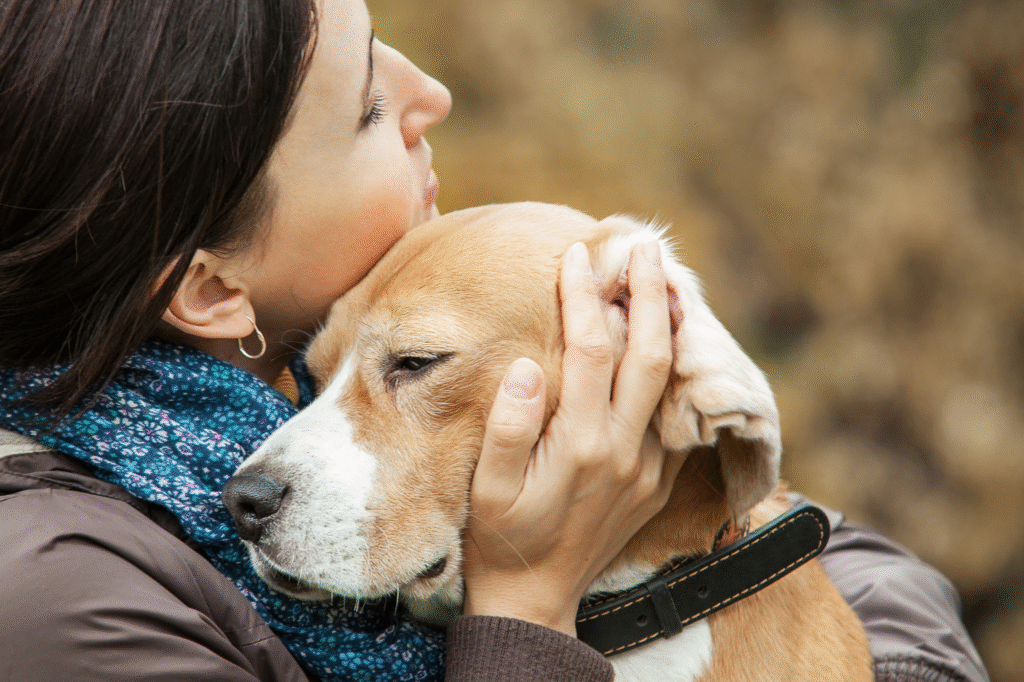Dogs detect stress through surprisingly sophisticated biological sensors.

Your dog knows when something’s wrong before you’ve fully processed it yourself. That restless energy you’ve been trying to ignore, the work deadline that’s been quietly gnawing at your peace, the relationship tension you think you’re hiding so well—your canine companion has already picked up on all of it. Dogs possess an extraordinary ability to read human emotional states through mechanisms that scientists are only beginning to fully understand. Their sensory capabilities extend far beyond what most people realize, allowing them to detect physiological and behavioral changes that occur when we experience stress, anxiety, or internal conflict. These remarkable animals serve as living biofeedback systems, often alerting us to tensions brewing beneath our conscious awareness.
1. They smell the cortisol flooding through your system.

When stress hits, your body releases cortisol and other stress hormones that actually change your scent in ways imperceptible to other humans but crystal clear to your dog’s nose. A dog’s olfactory system contains roughly 300 million scent receptors compared to the mere 6 million humans possess, giving them the ability to detect molecular-level changes in body chemistry. According to research published by Queen’s University Belfast in 2022, dogs can reliably distinguish between breath and sweat samples taken from people before and after stressful experiences with 93.8 percent accuracy. This isn’t some mystical intuition but rather a biological reality where emotional states literally become airborne chemical signatures. Your dog essentially smells fear, anxiety, and tension as distinctly as you might smell coffee brewing in another room.
2. Micro-expressions reveal what words cannot hide from them.

Facial muscles betray internal states through tiny, involuntary movements that flash across your face in fractions of a second, typically too quick for humans to consciously register but well within your dog’s perceptual range. Dogs have evolved alongside humans for thousands of years, developing specialized skills in reading human facial expressions that even our closest primate relatives don’t possess. Research has shown that dogs pay particular attention to the eye region of human faces, where subtle muscle contractions around the brows and eyelids telegraph emotional states, as reported by researchers at the University of Portsmouth’s Dog Cognition Centre. That furrow between your eyebrows you don’t realize has been there all morning registers clearly to your observant companion. Dogs watch your face constantly, cataloging these minute changes and correlating them with behavioral patterns they’ve learned over months or years of living with you.
3. Your breathing pattern shifts in ways they immediately notice.

Tension alters respiratory rhythms in subtle but consistent ways, making breaths shallower, faster, or more irregular depending on the type of stress you’re experiencing. Dogs are remarkably attuned to breathing patterns because respiratory sounds and movements serve as important social signals within their own species. According to findings from Azabu University in Japan published in 2023, dogs synchronize their attention and behavioral responses to changes in human breathing rates, suggesting they actively monitor this physiological marker. That presentation you’re mentally rehearsing or the difficult conversation you’re anticipating creates breathing irregularities your dog picks up on immediately. They may move closer during these episodes, seemingly offering comfort, or conversely become agitated themselves as they sense something amiss in their environment.
4. Changes in your walking gait telegraph internal distress.

Physical tension manifests through alterations in how you move through space, affecting everything from stride length to weight distribution across your feet. When stressed, people tend to hold their bodies differently, often tensing shoulder and back muscles in ways that create subtle but noticeable changes to their natural movement patterns. Dogs are motion-detection experts who’ve spent their evolutionary history tracking moving prey and monitoring pack members, making them exquisitely sensitive to locomotion irregularities. That stiff, hurried pace you adopt when running late or the heavy, dragging steps when exhaustion sets in don’t escape their notice. Your dog may respond by matching your pace, becoming more subdued when you move slowly, or exhibiting increased energy when your movements become quick and jerky.
5. Sleep disruption patterns alert them to prolonged stress periods.

Chronic tension inevitably interferes with sleep quality, creating patterns of restlessness, nighttime waking, or altered sleep schedules that your dog monitors with remarkable consistency. Dogs are crepuscular animals naturally attuned to twilight hours, but domestic dogs adjust their sleep schedules to match their human companions, making them sensitive observers of our nighttime behaviors. When you toss and turn, wake repeatedly, or abandon bed earlier than usual, your dog registers these deviations from established routines. Many dogs will forgo their own comfort to remain near restless humans, positioning themselves as close as possible or even placing a paw or head on their person. This vigilance isn’t coincidental but rather represents active monitoring of what dogs perceive as potential threats to pack stability.
6. Voice tone variations expose emotions you think you’re masking.

Vocal characteristics undergo systematic changes during emotional states, with pitch, tempo, and resonance all shifting in response to internal tension regardless of the actual words being spoken. You might say everything’s fine, but your voice tells a different story through microscopic fluctuations in frequency and amplitude that human listeners often miss consciously but dogs detect readily. Canines evolved to interpret the emotional content of vocalizations, both within their own species and increasingly with humans as domestication progressed. That slightly higher pitch when you’re anxious or the clipped, faster speech pattern when irritated comes through clearly to your dog’s auditory system. Dogs often respond to these vocal cues even more strongly than to the semantic content of what you’re saying, which explains why a cheerfully delivered reprimand confuses them far less than the tone suggests it should.
7. Your heart rate acceleration becomes detectable to their senses.

Cardiovascular changes accompanying stress include elevated heart rate and altered blood pressure, both of which produce subtle physical manifestations your dog can perceive through multiple sensory channels. The faint sound of your heartbeat, normally masked by environmental noise, may actually be audible to dogs with their superior hearing when they’re pressed against you during rest or relaxation. Beyond auditory detection, dogs can sense the slight tremors and heat changes associated with increased cardiac activity when in close physical contact. Some dogs place their heads or bodies directly over their human’s chest area during times of distress, possibly because this positioning allows them to monitor cardiovascular activity most effectively. Service dogs trained to detect medical emergencies rely partially on these same physiological signals that ordinary companion dogs pick up instinctively.
8. Screen time obsession signals avoidance behavior they recognize clearly.

Excessive device use often represents an escape mechanism from uncomfortable emotions, and dogs notice when you retreat into phones, tablets, or computers rather than engaging normally. Your attention allocation changes dramatically during these episodes, with eye contact, physical interaction, and environmental awareness all declining as you focus on digital content. Dogs thrive on social engagement and become noticeably affected when their humans withdraw into electronic devices, often attempting to insert themselves between you and the screen or performing attention-seeking behaviors. That urgent scroll through social media when something’s bothering you doesn’t look like relaxation to your dog but rather like a form of agitated displacement activity. Dogs may initially try to engage you through their usual methods before eventually settling into watchful waiting, monitoring for signs that you’ll return to normal interactive patterns.
9. Food habits shift in revealing ways during stressful periods.

Eating behaviors undergo significant modifications when people experience tension, with some individuals stress-eating while others lose appetite entirely, and dogs track these variations meticulously. Meal timing irregularities, altered portion sizes, or changes in food selection patterns all register with dogs who’ve learned to anticipate feeding routines both for themselves and their humans. Dogs are opportunistic feeders who pay keen attention to human food behaviors, not merely out of hope for scraps but as part of their broader environmental monitoring. When you skip breakfast because anxiety has killed your appetite or mindlessly snack throughout an evening when worried, your dog notes the deviation from established patterns. Many dogs adjust their own eating behaviors in response, sometimes refusing food when their humans are upset or becoming more food-focused when detecting stress-related changes in household routines.
10. Social withdrawal becomes obvious through behavioral pattern changes.

Tension often drives people toward isolation, manifesting as canceled plans, ignored messages, or increased time spent alone in specific rooms, and dogs recognize these social contractions immediately. Dogs are inherently social animals who find prolonged isolation distressing, making them particularly sensitive to withdrawal behaviors in their human companions. When you stop taking calls, avoid visitors who usually come by, or spend hours sequestered in home offices or bedrooms, your dog perceives a fundamental shift in pack dynamics. They may respond by increasing their proximity, essentially refusing to allow complete isolation by maintaining physical presence even when you seem to prefer solitude. Some dogs become protective or vigilant during these periods, positioning themselves between you and doors or windows as if guarding against perceived external threats. Others grow anxious themselves, exhibiting stress behaviors like excessive licking, pacing, or whining as they attempt to process why their human has altered normal social patterns.
